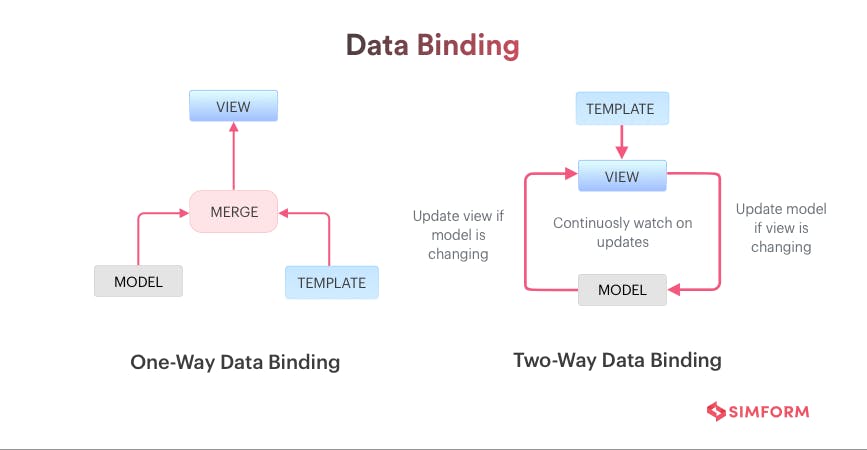Data Binding and Server Rendering in Angularjs and Reactjs
What you call a modern application and is not built with a frontend framework such as Angular and Reactjs? Presently, these both frameworks are trending because of their superheroic capabilities, and significant aspects such as Data Binding and Server Rendering.
Let's see these both aspects in detail in Angular and Reactjs .
Data Binding in Angular
Angular uses two-way data binding and hence so there’s no question that any tech stack can beat the synchronization between two different elements like Angular does. It keeps the two layers updated with the same data. That is to update the model layer as the value changes in the input.
It binds the HTML element to the model variable and not just displays it but also changes it in the backend. It helps in coordinating the two different data models of a framework, which helps in creating an interactive user interface without interventions of several callbacks and extra efforts by the programmer.

Two way data binding is the most efficient technique for fetching the data from large ERP based software like medical software, accounting, and other software that demands a highly complex requirement. The bidirectional nature of Angular makes it easy to build enterprise resource planning software.
Data Binding in Reactjs
Reactjs being a library framework, does not follow the automatic approach to data binding and stick to its simplest but solid architecture. It does not let developers fall into the nitty-gritty of the complex handling of objects. However, Reactjs uses one-way data binding with the two way data binding helpers to manage both heavy parsing work and extensive manipulation of data.
Server Rendering in Angular:
Angular facilitates the web crawlers by generating static versions of the application that are likable and searchable easily. With the use of server-side rendering, Angular renders the application by creating a static view before it gets fully interactive. It is up to you how cleverly you use the combination of JSON and client-side caching to increase server-side performance. Nothing beats Angular when it comes to reducing the traffic between client and server.
Angular is designed in a pattern that has in-built testing requirements such as dependency injection and mocking the objects. Since Angular has got Google as a backup, we can not doubt its upcoming improvements. And it is capable of reducing the amount of code by eliminating the need to recompiling and quickly reflecting the changes in the frontend.
Server Rendering in Reactjs
To make your application SEO strong, you would need to render the application to the server. Reactjs does it with ease with the help of some specific functions. You can do it by calling RenderToString function instead of calling Render. Unlike other javascript frameworks, Reactjs is not that rigid library that would go on restricting you from getting benefits.
Alternatively, you can also use renderToStaticMarkup if you want to avoid creating DOM attributes such as data-react-id, which is useful for creating a simple static page generator.
The most prominent example of Reactjs application is “Facebook.”
Super high-speed rendering
Better functions even at the mediocre internet connection
Let’s look at another example of “Dropbox”
Renowned for online file hosting platform
Smooth and rapid synchronization of data in the cloud
Remote connectivity
Conclusion
Angular can update the data simultaneously in both the models along with its ability to capture the static view before the application gets fully interactive. These are the two major aspects for which Angular stands as the superheroic framework and hence it is used by giant platforms like Upwork and PayPal.
